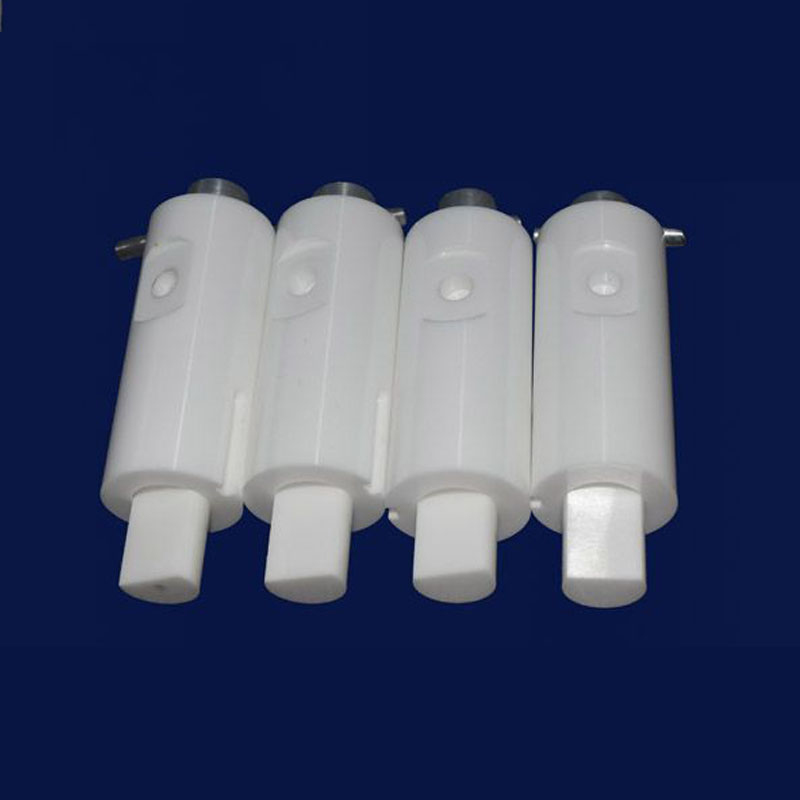Why use ceramic dispensing valves for dispensers?
Time: 2019-01-07 Writer: mingrui
Why do you want to use ceramic dispensing valves for dispensers?

The ceramic dispensing valve of the dispensing machine is formed by connecting the cylinder, the valve body and the discharging body up and down. The cylinder and the valve body are separated by a diaphragm to prevent the glue from invading the air chamber, and the valve in the discharging body is fixed on the piston rod, and the valve is used. The switch achieves the opening and closing of the glue. So, why should the dispenser use a ceramic dispensing valve?
How does the dispensing valve work?
The compressed air is sent to the plastic bottle (syringe), and the glue is pressed into the feeding tube connected to the piston chamber. When the piston is in the upper stroke, the piston chamber is filled with glue, and when the piston pushes the dispensing needle downward, the glue is from the needle. The mouth is pressed out. The amount of glue dripped is determined by the distance under the piston and can be adjusted manually or in software.
Valve drip
Conventional dispensing valves often have valve dripping, which occurs because the diameter of the needle used is too small. The metal dispensing valve is not resistant to high temperatures, and it is easy to stick a colloidal liquid, which may even affect the bubble discharge action. The ceramic dispensing valve is a perfect solution to the problem of glue leakage. The ceramic dispensing valve produces the least back pressure and the smoothest liquid flow.
Inconsistent size of glue
When the glue is inconsistent, it is mainly caused by the pressure cylinder or the air pressure instability of the stored fluid. The inlet pressure regulator should be set at 10 to 15 psi below the lowest pressure in the plant. The pressure used in the pressure cylinder should be above the pressure in the middle of the pressure regulating gauge. The pressure should be avoided in the low pressure part of the pressure gauge. The ceramic dispensing valve control pressure of at least 60 psi can ensure the stability of the rubber, and the ceramic dispensing valve is resistant to high temperature and corrosion, and will not form a glue liquid flow blockage.
The flow rate is too slow
The flow rate of the dispensing valve is too slow, also due to the material of the metal dispensing valve itself. When the temperature of the metal is too high, when the liquid is left over, agglomeration will occur, and a blockage will occur, and the flow rate will be slowed accordingly, resulting in inconsistent size of the glue. The zirconia ceramic ceramic dispensing valve can perfectly solve this problem. The zirconia ceramic itself has wear-resisting and high-temperature resistance, and even at a high temperature of 1400 ° C, the liquid can be normally circulated.
The liquid dries in the valve
This situation is mainly due to excessive moisture or repeated use of instant glue. The metal dispensing valve will cause the temperature of the valve body to be cold due to the use environment. The ceramic dispensing valve can ensure the constant temperature state. When the liquid flows through the valve body, it will not dry up and ensure normal circulation.
More about the ceramic,please contact us,thanks.

 Moble: +86 18122974730
Moble: +86 18122974730 Phone: +86 746 3386888
Phone: +86 746 3386888 Email: admin@cerampart.com
Email: admin@cerampart.com Skype: +86 18122974730
Skype: +86 18122974730 Wechat: +86 18122974730
Wechat: +86 18122974730